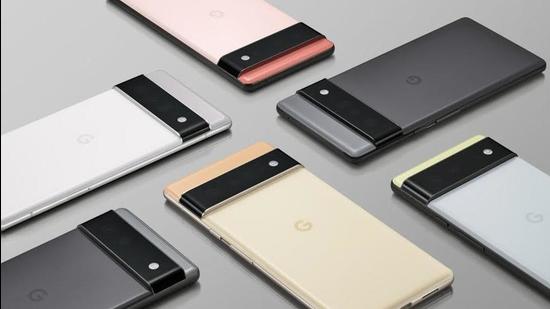Google Pixel 6 ushers in a direction for Pixel phones that’s all about power
Google isn’t approaching the new Pixel phones with just cutting edge hardware. There are upgrades for security and privacy which are integrated within the new Android 12 operating system, upgrades to continue Google’s mission to make smartphone cameras more inclusive by deciphering more skin tones as well as updates to speech recognition which make it understand conversations and context.
The annual Google Pixel smartphone line-up refresh has been ticked off for the year. The official unveiling of the Google Pixel 6 and Pixel 6 Pro does mark a change in direction, of Google’s approach to Pixel phones over the years. The Google Tensor chip plays a big part in that. The insistence that the phones have “state of the art hardware”, the words of Google executive Rick Osterloh, does indicate that Google isn’t holding back in the Android flagship competition that sees it pitted against Samsung’s Galaxy S series, and indeed the likes of the Xiaomi Mi 11 Ultra and the Vivo X70Pro and the X70Pro+ phones. There is no “that’ll do” this year, on the spec sheet.

The Google Pixel 6 is priced at $599 with preorder now live in US at this time. The flagship Pixel 6 Pro gets a $899 price tag, and is now available for preorder in the US. There is no word yet on the India availability or indeed when the new Pixel 6 series phones will roll out in more countries.
Google isn’t approaching the new Pixel phones with just cutting edge hardware. There are upgrades for security and privacy which are integrated within the new Android 12 operating system, upgrades to continue Google’s mission to make smartphone cameras more inclusive by deciphering more skin tones as well as updates to speech recognition which make it understand conversations and context. Yet, as you interface with the phone, Android 12’s dynamism such as contextual information based on time of the day, active widgets and a completely new interface. Google insists, this is a “personal phone experience”.
Android 12’s privacy upgrades are following what Apple’s iOS for iPhones have been doing for years. Such as on-screen indicators when an app is using the phone’s camera or microphone at the time. Privacy measure parity is good, and Android also adds stricter measures to prevent apps from tracking your web browsing across other apps and web browsers. Google has also confirmed 5 years of security updates for all Pixel 6 phones—that’s much more than any Android phone maker till now has offered to keep rolling out the monthly security updates for your phone.
Google Tensor chip should worry Qualcomm. The switch to their own chips should give Google more control over the marriage of hardware and software, and the company isn’t holding back in saying that artificial intelligence (AI) plays a big role every time you interface with the new Pixel 6 phones. That’s one less customer in the smartphone space for Qualcomm. Google says Tensor fulfils “our vision of what a smartphone should be able to do.” That says it all, about the company not being happy with the one-size-fits-all positioning that Qualcomm’s chips offer to all their customers. Apple has been using their own chips in the iPhone for years, and that’s now extended to the iPad and Mac computing devices as well, something that is particularly worrying Intel.
Google says the Tensor chip is as much as 80% faster in CPU performance, than what the Google Pixel 5 offered as peak performance. The Pixel 6 Pro offers 12GB RAM as standard. Benchmarks and real world performance are completely different things, and we shall reserve any opinions on actual performance till we get to use the Pixel 6 series phones. But the improvements should be seen across apps, rather than just raw performance—such as potentially better speech recognition and typing speed using the Gboard camera app.
“Most advanced smartphone camera in the world”, says Google. The main camera is a 50-megapixel sensor, and captures up to 2.5 times more light due to larger pixels. The ultra wide cameras, 12-megapixel as well as 48-megapixel telephoto lens, make it a triple camera setup. The Super Res Zoom gets up to 20x zooming in. On paper, the camera hardware is powerful, and we have the historical knowledge of Google’s very powerful image processing algorithms, which gives these cameras a solid foundation to build on.
“Google Tensor also powers computational photography and video features, which are part of what make Pixel such an impressive phone,” says Monika Gupta, Senior Director, Google Silicon.
Skin tone handling and nuances of the environment around you, are the big focus for the Google Pixel 6 series camera updates. Google says they worked with a lot of folks, including photographers, and took thousands of photos of different skin tones in different lighting conditions in the real world, to optimise the algorithms. Better face detection and auto exposure saw tweaks behind the scenes, as well as toning down of rogue lighting streaks that we often see in photos. The Auto Enhance editing feature has also been tweaked in the same way, to recognise and appreciate more skin tones. How well these updates work with third-party camera and photography apps, remains to be seen.
Hang on! The Magic Eraser feature lets you wipe out background objects or people from your photos—on the phone itself. No need to dabble with photo editing apps and the complexities those bring. To be able to erase physical objects from photos and replace those with direct pixels, is one indicator of how powerful the Google Pixel 6 series phones are. Photobombs are a thing of the past. Or are they? We need to test the phones in detail to see how well the erasing happens in different backgrounds and lighting environments, to have a definitive verdict on how good this is.





